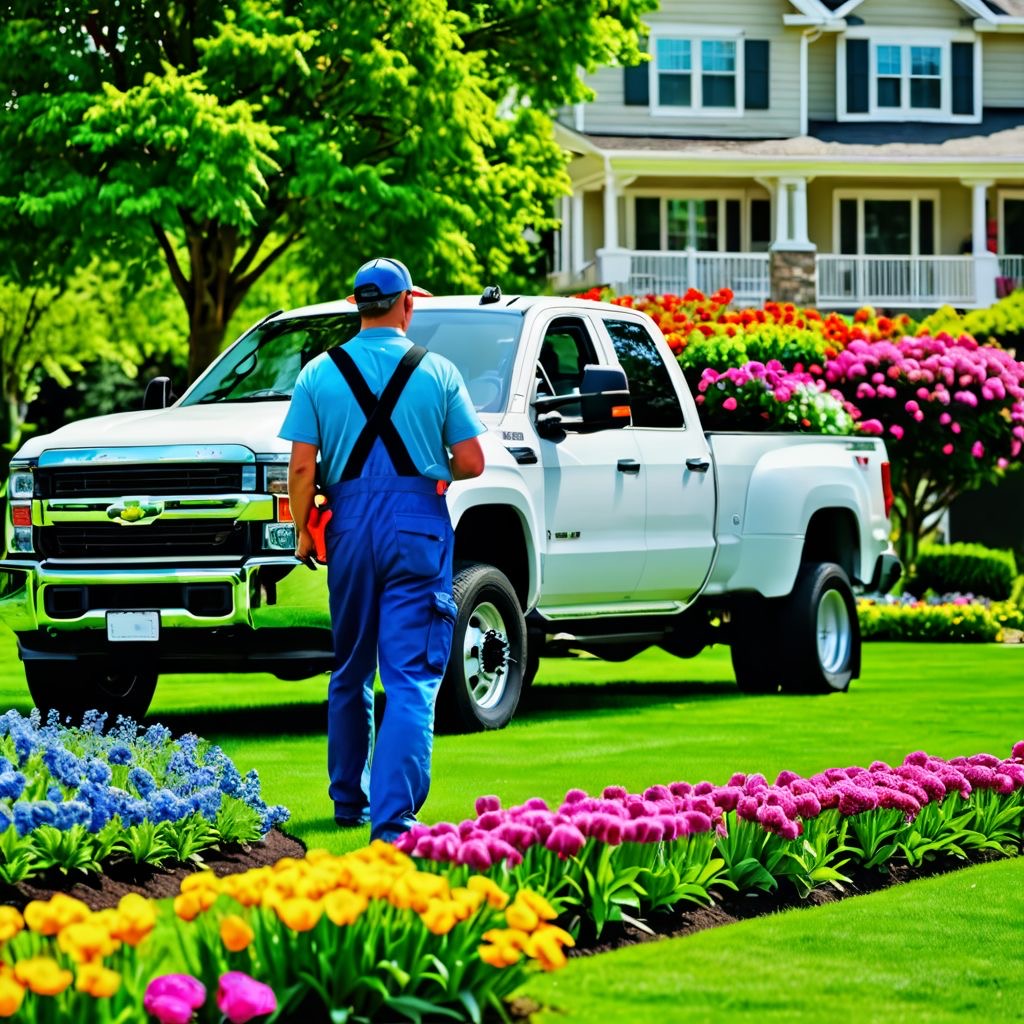
Table of Contents:
1. Introduction
2. What is Aerating?
3. Why Aerate Your Winnipeg Lawn?
- 3.1 Benefits
- 3.2 When to Aerate Your Lawn
4. How to Aerate Your Lawn
- 4.1 Equipment Needed
- 4.2 DIY Aeration vs. Hiring Professionals
- 4.3 Steps to Aerating Your Lawn
5. Best Practices
- 5.1 Post-Aeration Care
- 5.2 Combining Aerating with Other Lawn Care Tasks
6. Common Mistakes to Avoid
7. Case Studies
8. Conclusion
1. Introduction:
Picture yourself standing on a beautifully lush, green yard; the kind you see in those iconic Instagram posts featuring backyard barbecues and picture-perfect picnics. That’s the dream, right? For any grass-loving enthusiast in Winnipeg, the path to that dreamy turf starts with the basics of yard care. That’s where aeration comes into play! If you've ever wondered about the secrets behind those breathtaking greens, look no further—Winnipeg lawn care and lawn mowing experts are here to guide you. Aerating your turf is essential for its well-being, and it doesn't just feel good to stand on—it's vital for healthy growth. Now, before we dive into the specifics, let’s talk about the why's and how's. Many homeowners are blissfully unaware that grass cutting in Winnipeg is more than just a bi-weekly chore. “Wait, there's more?!” you ask incredulously. Yes, my friend! Your yard needs love, and that love often comes in the form of the right techniques. In this guide, we’ll cover everything from basic principles to advanced methods made easy for everyone, even for those who typically dodge gardening like it’s a game of dodgeball.
Extensive experience has shown that many Winnipeg lawn care and lawn mowing contractors affirm the critical role of aeration in achieving and maintaining that beautiful green canvas. It’s not just about cutting grass (which is undoubtedly important)—it’s also about soil health, root growth, and nutrient absorption that allow unique plants to thrive. Let’s dive deeper into why aeration is crucial for maintaining your outdoor oasis. Speaking of leveling up, let’s not skip the importance of affordability when considering your options. After all, who wouldn’t want affordable Winnipeg lawn care and affordable Winnipeg lawn mowing that doesn’t break the bank while still beautifying your green space? A little investment in aeration can pay off in spades, turning your average yard into a lush paradise worthy of envy.
Contact us today for your free estimate.
2. What is Lawn Aeration?
Aeration is the process of perforating the soil with holes to allow air, water, and nutrients to penetrate deep into the grass roots. This “softened” approach effectively relieves compacted ground—a common issue affecting many homeowners, especially those in tighter urban settings. Think of it as giving your yard a breath of fresh air! Aeration can be performed in two main ways: core aeration, which removes plugs of soil, and spike aeration, which uses spikes to create holes but does not remove any soil. Core aeration is often the preferred method for optimal results—after all, who wouldn’t want the best for their greenery (and maybe a little one-up on the neighbor’s turf)?
3. Why Aerate Your Winnipeg Lawn?
3.1 Benefits of Lawn Aeration:
Aerating your yard has numerous benefits that make it a non-negotiable part of your maintenance plan. Here are some key advantages:
-1. Improved Air Circulation: Aeration allows for better airflow within the soil, which promotes root growth and healthier grass.
-2. Enhanced Nutrient Absorption: By relieving compaction and creating holes, nutrients from fertilizers can easily penetrate the ground, making them more effective.
-3. Improved Drainage: Aerating your yard helps alleviate waterlogging and pooling, leading to a lush, green expanse without mud pits.
-4. Drought Resistance: Healthy roots absorb water more effectively, providing a stronger, drought-resistant lawn.
-5. Reduction of Thatch: Thatch, that pesky layer of dead grass and organic material sprawled on top of the soil, can be a barrier to health. Aeration breaks through that layer, promoting decomposition.
-6. Healthier Grass Growth: Ultimately, a well-aerated yard supports vibrant, stronger grass that’s better equipped to withstand pests, diseases, and inclement weather. Sound scientific enough for you? Great! It’s not just fluff—these benefits are supported by studies from turf experts. For instance, a study conducted by the University of Minnesota found that areas aerated in the fall have a 30-60% improvement in overall health compared to non-aerated spaces.
3.2 When to Aerate Your Lawn Timing is key!
The best moment to aerate your turf is generally during the peak growing season. For cool-season grasses (think Kentucky bluegrass and fescue), early spring or early fall is ideal. Warm-season grasses (like Bermuda or zoysia) benefit from aeration in late spring to early summer.
Contact us today for your free estimate.
4. How to Aerate Your Lawn:
4.1 Equipment Needed So, you’re sold on aeration. Fantastic! But first, a tiny hurdle: do you have the right tools?
-1. Aerator: You can rent a core aerator from your local hardware store or buy a manual spot aerator. Some homeowners opt for spike aerators, but remember—core aeration is generally the way to go for optimal results.
-2. Rake: If you're using core aeration, you'll want a rake to spread any necessary supplements and collect those soil plugs afterward.
-3. Fertilizer (optional but recommended): This is the golden ticket! Consider organic lawn fertilizers to provide nutrients right after aeration.
4.2 DIY Aeration vs. Hiring Professionals
Here’s a quick conundrum: should you hire professionals or tackle this project yourself? Here’s a pro-cons breakdown:
- DIY Aeration
- Pros: It’s cost-effective, you get to flex those muscles, and you control the schedule.
- Cons: If you’re not sure what you’re doing, it can be less effective. Plus, if you start sweating buckets, that could be a sign!

- Professional Aeration
- Pros: Experts know the ins and outs of the process, and they’ll likely optimize results. No sweat, literally!
Sunshine Maintenance & Landscaping: Your Go-To company for lawn care Winnipeg homeowners trust
Contact us today for your free estimate.
- Cons:
It costs more—not the most wallet-friendly option but definitely less labor-intensive. Ultimately, the choice is yours, but you might want to consider your comfort level when it comes to handling yard maintenance. If your idea of a weekend is a hammock and a good book, maybe hire out!

4.3 Steps to Aerating Your Lawn Ready to get that grass breathing? Here’s a straightforward step-by-step process for aerating your yard:
-1. Prepare the Area: Mow your yard to about 2-3 inches tall, and water it well a couple of days before aeration. This helps the soil to be softer and easier to penetrate.
-2. Choose Your Aerator: Whether you’re using a professional service or a rented machine, make sure it’s appropriate for your lawn size.
-3. Aerate the Lawn: Move the aerator over your green space in straight lines, making sure to overlap your rows. Remember: the more holes, the better! Aim for holes spaced about 2-4 inches apart.
-4. Leave the Soil Plugs: If you're using a core aerator, leave the soil plugs on the yard. They’ll decompose and provide nutrients back into the ground.
-5. Fertilize: Now’s the time to sprinkle some fertilizer on those holes and let them work their magic.
-6. Water the Yard: Give your green space a deep watering afterward to help the roots soak up everything they just received.
5. Best Practices for Lawn Aeration:
5.1 Post-Aeration Care Congratulations on aerating your yard! Your work doesn’t end here, though. Proper post-aeration care is crucial.
-1. Limit Traffic: Avoid heavy foot traffic on your yard until it has had time to recover.
-2. Keep It Watered: Maintain adequate moisture, particularly in the first couple of weeks after aeration, to help the grass and soil recover.
-3. Monitor Growth: Keep an eye on your yard’s growth and health for a few weeks post-aeration. You should notice vibrant, lush spots popping up!
5.2 Combining Aeration with Other Lawn Care Tasks To ensure you’re operating at peak yard performance, consider these factors:
- Fertilization: Combine aeration with fertilization to supercharge your greenery.
- Weed Control: Aerating has the added benefit of weed control, mainly if paired with a solid yard care strategy.
Ready to chat about your Lawn/garden and landscaping goals?

Reach out by call or text to: 204-229-9789 or click here to submit your information today to arrange a “no obligation” introductory phone call. We look forward to helping you transform your yard.
6. Common Mistakes to Avoid:
No one’s perfect—including us yard caretakers! Here are some common pitfalls to dodge:
-1. Aerating Too Often: Aeration too frequently can damage your yard. Generally, once a year is sufficient for most environments.
-2. Ignoring Soil Conditions: If the soil is too dry or too wet, you may not achieve the desired results.
-3. Neglecting to Fertilize: Skipping nutrients after aerating can limit the benefits and thwart your hard work.
7. Case Studies; Successful Lawn Aeration Stories:
Imagine your neighbor Bob, who used to have a patchy yard resembling a worn-out carpet. After a solid aeration session in early fall and adding an organic fertilizer, he noticed a 75% improvement in grass growth over just one season. That's pretty substantial, right? His greenery became the envy of the block—and Bob even found he received more invitations to backyard gatherings (who would’ve thought aeration could provide social benefits?). Another example is Michelle in downtown Winnipeg, who hired a local yard care service. She initially had a dense, compacted area, causing her lawn to struggle. After one professional aeration session, along with weekly grass cutting services, her sad space transformed into a vibrant retreat.
Contact us today for your free estimate.

